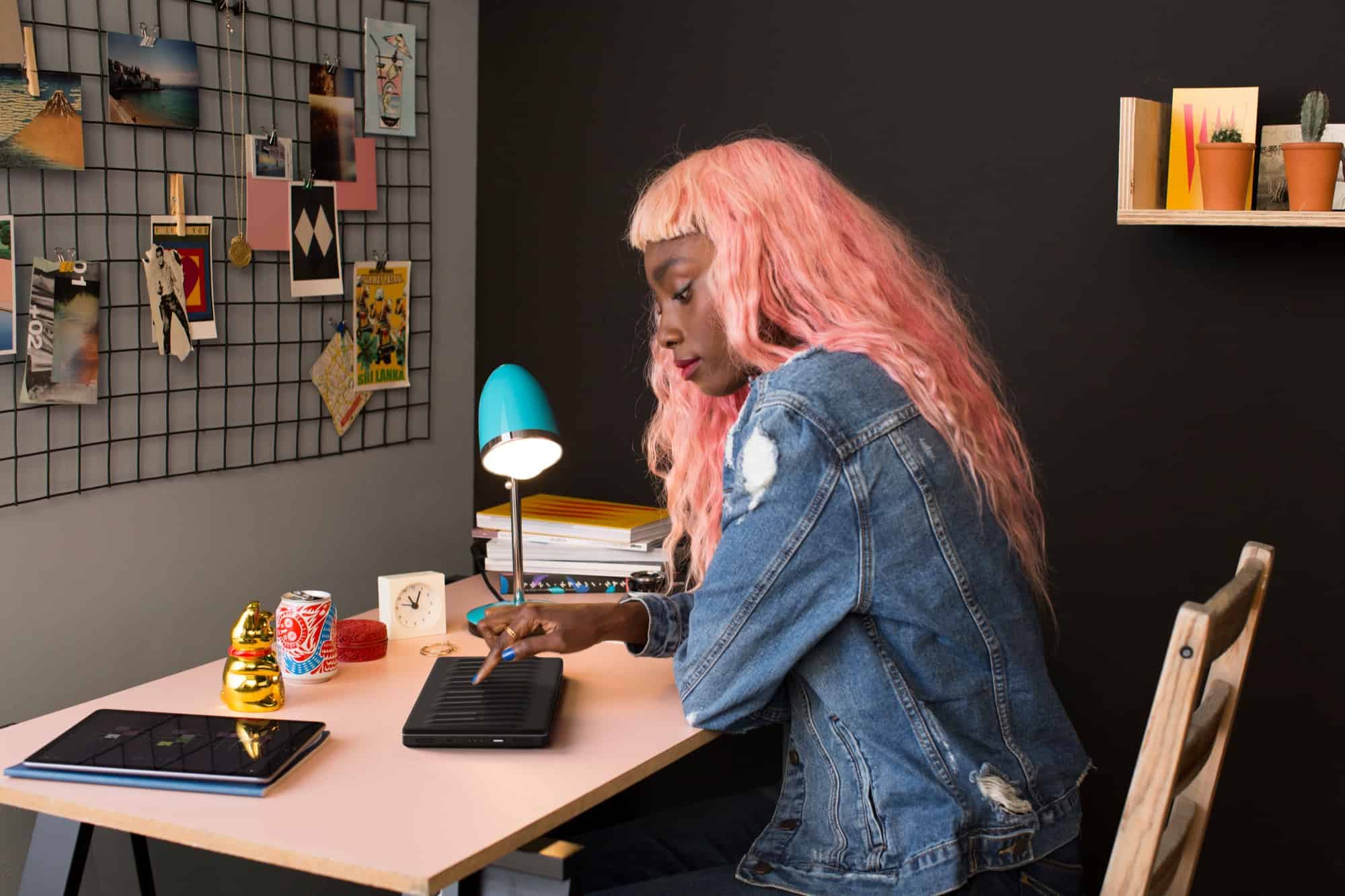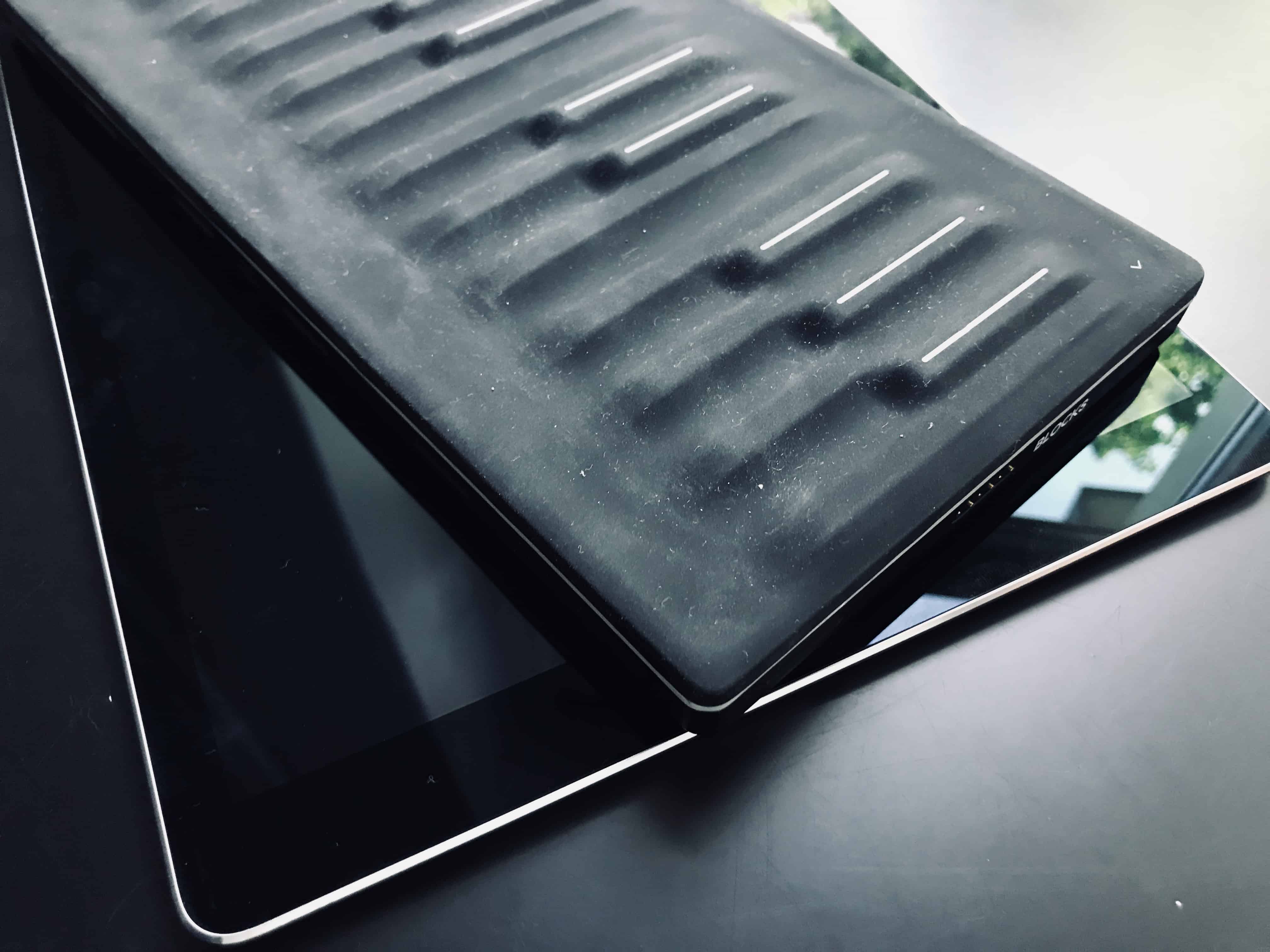Imagine a piano keyboard that is also a multitouch surface, like the screen on an iPad. Now imagine that this is a tactile silicone surface with bumps and dips so you can feel the keys, just like a piano. Hold that image in your mind — you are currently imagining the Roli Seaboard Block, backpack-sized Bluetooth MIDI keyboard that will change the way you play music.
This post contains affiliate links. Cult of Mac may earn a commission when you use our links to buy items.
Creative Block

Photo: Roll
The Seaboard Block is a part of Roli’s Blocks range, a collection of modules that clip together and let you design your own musical instrument. The keyboard is called the Seaboard, and it can be combined with drum pads, a looping pad, and others.
The Seaboard Block is also a cut-down version of Roli’s big Seaboard Rise range. The only practical differences are that the Block is a lot smaller (24 keys), is made from plastic (the Rises have sturdy metal bodies), and that the Block is only a keyboard, whereas the Rises have extra controllers on their surfaces.
MIDI Polyphonic Expression
The thing that all the Seaboard’s have in common, though, is MPE, or MIDI Polyphonic Expression (aka. Multidimensional Polyphonic Expression). A decent MIDI keyboard, the kind that has piano keys, will have two expressive sensors. One is velocity sensitivity: Hit a key harder, and the sound is louder. The other is aftertouch, which lets you keep manipulating a note after playing it, by keeping the key pressed down.
MPE does both of these, but adds several more controls. For instance, you can slide your finger left or right to alter pitch. You can also slide a finger up and down on the keys (from front to back) to further sculpt the sound. And in addition to the usual velocity sensitivity, you can also trigger a different effect/sound when you lift your finger off the key, which is pretty wild.
The idea is that you can make a keyboard as expressive as a string instrument. On an electric guitar, for instance, you can bend strings through any pitch you like, you can slide between notes, and you can hammer a finger down onto a string to play a note, or pull it off again, all of which give quite different results. MPE brings some of this to the keyboard.
MIDI means apps
The Seaboard Block hooks up to a computer, iPhone, or iPad via Bluetooth MIDI, a standard for wireless connection of musical instruments. It’s a controller, so it makes no sounds of its own. You have to pair it with an app. More and more apps are adding support for MPE, including GarageBand. A great place to start, though, is Roli’s own Seaboard 5D. Avoid the company’s other app, Noise, which is way more confusing, and seems to want to be a kind of cross between a social network and a badly-designed all-in-one music-making app (you will need Noise to change some settings on your Blocks, though).
Depending on the app you connect to, the Seaboard Block’s various controls will map to different controls in the app itself. That’s way beyond the scope of this review. That’s why I’m using Seaboard 5D. Because the app was made by Roli, it squeezes every drop of expressiveness out of the unit.
In use

Photo: Charlie Sorrel/Cult of Mac
Playing the Seaboard Block is like giving an amateur back massage. You can dig your fingers into the yielding rubber and slide them around. If you ever touched a Seaboard in an Apple Store, while disconnected, you’ll know that it feels mushy and lifeless. But when it’s powered up and connected, the level of expressiveness is off the charts. In fact, when you start to get really carried away, the unit can slide across the desk. That doesn’t happen with the big metal Rises, but then, those don’t fit easily in a backpack.
The Seaboard Block can be used as a straight-up piano keyboard, although it’s not that great at it. If all you want is a way to tap chords and melodies into your iPad, then a regular Bluetooth MIDI keyboard would be easier to use, especially if you “touch type,” or play without looking. But if your main interest is MPE, then the Seaboard Block will do just fine for regular keyboard duties, too.
In addition to the keys for playing, there are also two chevrons at the top corners of the unit. These switch up and down through octaves, so you can go from fat bass to shrill trills while playing. I find this feature very handy.
The bad
There’s very little that I don’t like about the Seaboard Block. It just works, it’s fun to use, and it’s super portable. But I do have one concern. One is that the rubber is already peeling off If it’s sat on your desk the who time, then no problem. But if you carry it in a bag, then the rubber cover is going to be pulled up and away from the plastic chassis. It’s easy to catch the edges. Right now, the corners on the Cult of Mac review unit are still firmly in place, but I’ve read online reports of folks who have suffered some damage.
All in all, though, the Seaboard Block is an amazing little device, one which can completely change how you make music. Recommended.
Buy from: Amazon
![Creative Block: Roli’s expressive MIDI keyboard goes portable [Review] Roll seaboard block review](https://www.cultofmac.com/wp-content/uploads/2018/05/IMG_3653.e99046e620b94bc58224cad7d44dcdd2.jpeg)

